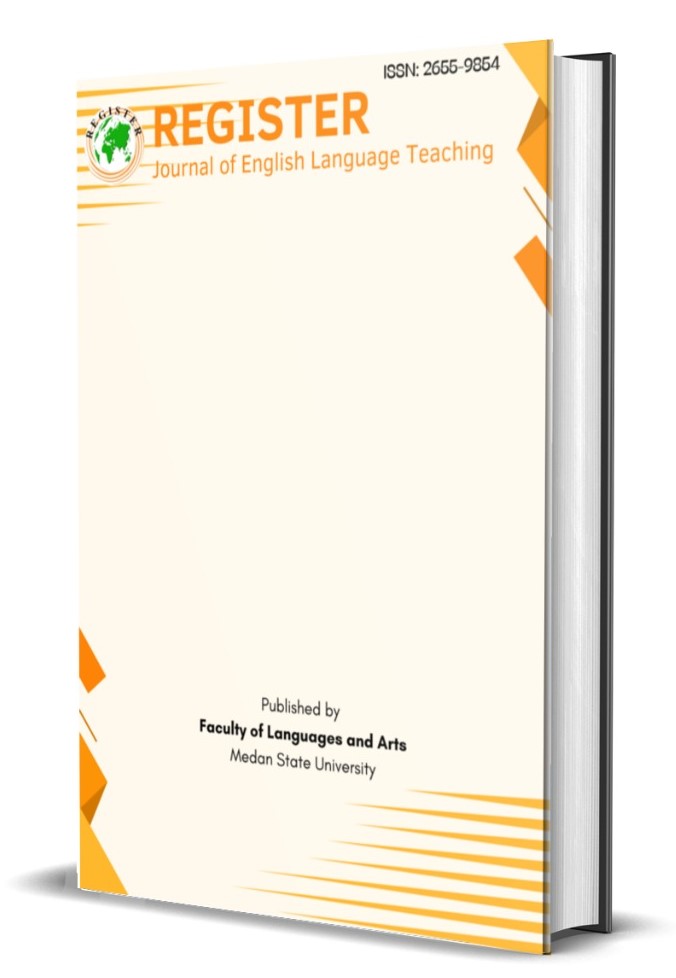Discourse Analysis of Thematic Structure: SEVENTEEN JOSHUA’s Speech in UNESCO Youth Forum
DOI:
https://doi.org/10.24114/reg.v14i1.64352Abstract
This study aimed to find the underlying messages in SEVENTEEN Joshua’s Speech in UNESCO Youth Forum through a textual metafunction analysis on the thematic structure. SEVENTEEN, a global K-Pop boy band, was chosen to deliver a speech as the representation of youth in UNESCO Youth Forum in Paris last 2023. This research used a descriptive-qualitative method, Halliday’s textual metafunction and Leech’s thematic meaning theories. Based on the findings, JOSHUA, the American member of SEVENTEEN, used a lot of unmarked themes in highlighting the group’s effort and dedication in promoting education. Meanwhile, most of the marked themes were used to highlight their long-lasting and consistent contribution to UNESCO. Therefore, this research concluded that JOSHUA made SEVENTEEN as the ‘main character’ in his speech.Downloads
Published
Issue
Section
License
Copyright (c) 2025 Jesselyn Kaonedy, Diantry Binarwaty Habibie Nasution, Istiqomah Istiqomah , May Sastia, T. Thyrhaya Zein

This work is licensed under a Creative Commons Attribution-NonCommercial-ShareAlike 4.0 International License.
Authors who publish with this journal agree with the following terms:
- Authors retain copyright and grant the journal right of first publication with the work simultaneously licensed under a Creative Commons Attribution License that allows others to share the work with an acknowledgment of the work's authorship and initial publication in this journal.
- Authors are able to enter into separate, additional contractual arrangements for the non-exclusive distribution of the journal's published version of the work (e.g., post it to an institutional repository or publish it in a book), with an acknowledgement of its initial publication in this journal.
- Authors are permitted and encouraged to post their work online (e.g., in institutional repositories or on their website) prior to and during the submission process, as it can lead to productive exchanges, as well as earlier and greater citation of published work (See The Effect of Open Access).
- This work is licensed under a Creative Commons Attribution-ShareAlike 4.0 International License.








